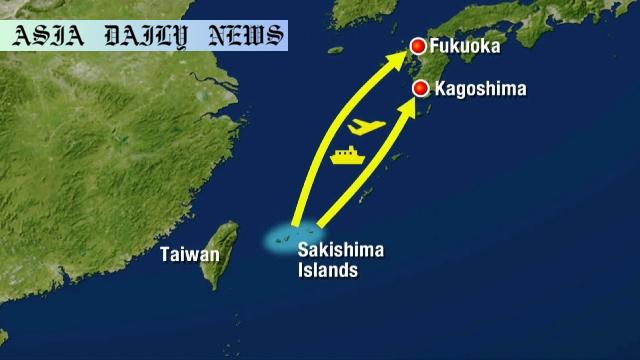Okinawa evacuation plan outlines safe relocation methods targeting 120,000 residents and tourists during emergencies.
Japan releases its first evacuation plan for Okinawa.
Plan targets relocation of 120,000 residents during emergencies.
Evacuation involves ferries, aircraft, and buses for efficiency.
Plan prioritizes keeping local communities intact.
Support measures for elderly and patients to be further studied.

Introduction to Japan’s First Okinawa Evacuation Plan
Japan has demonstrated its proactive approach by compiling its first evacuation plan for contingencies in Okinawa, a region critical due to its strategic location and vulnerability to geopolitical tensions. This comprehensive plan targets the evacuation of approximately 120,000 individuals, including both residents and tourists, primarily from the Sakishima Islands. The initiative comes in light of heightened concerns over potential emergencies, such as escalating tensions involving Taiwan. Released recently, this blueprint prioritizes planning, precision, and the welfare of affected populations.
The Scope and Execution of the Evacuation
The evacuation plan is an impressive undertaking. It spans five municipalities encompassing the Sakishima Islands and aims to relocate individuals to 32 safe locations across Kyushu and Yamaguchi Prefecture. The operation is expected to be completed within six days, with a robust framework involving vessels of the Self-Defense Forces, Japan Coast Guard, private ferries, and aircraft capable of efficiently moving 20,000 individuals per day. Once evacuees reach these predefined locations, arrangements such as chartered buses and other local modes of transport are in place to ensure smooth transit to temporary accommodations like hotels or traditional Japanese inns in the host municipalities.
Prioritizing Community and Special Needs
A unique aspect of the plan is its emphasis on maintaining the social fabric of local communities during displacement. Measures are in place to ensure that residents from the same districts are relocated together. For example, individuals from Yonaguni Town would primarily be accommodated in Saga City or Tosu City, while Hateruma Island residents would settle temporarily in Omura City, Nagasaki. This consideration not only preserves cultural ties but also allows easier reorganization once the situation stabilizes.
Addressing Challenges and Future Improvements
Despite its detailed nature, the plan calls for further refinement. Issues such as provisions for elderly individuals, hospitalized patients, and potential challenges in prolonged evacuation scenarios are critical. The government aims to establish additional support mechanisms and expects to develop basic guidelines beyond 2026. These enhancements are vital to make the evacuation process more inclusive and sustainable in the face of long-term displacement. Furthermore, logistical bottlenecks like ferry capacity and maintaining clear lines of communication during crises require careful analysis and mitigation strategies.
Broader Implications and Regional Significance
This evacuation plan is not merely a precautionary measure but a testament to Japan’s foresight in disaster management and regional stability. Okinawa’s proximity to Taiwan and increasing geopolitical risks make the islands a focal point for ensuring safety and resilience. By enacting such a comprehensive strategy, Japan exemplifies a responsible approach to safeguarding its citizens while preparing for potential humanitarian crises. Moreover, the inclusion of neighboring prefectures in hosting evacuees showcases unity and cooperative planning on a regional scale.
Conclusion
Japan’s first Okinawa evacuation plan marks a significant step in crisis preparedness and showcases the nation’s capability to address emergencies effectively. By focusing on community cohesion, logistical efficiency, and eventual improvements in supportive measures, this initiative sets a benchmark for disaster management in a sensitive and rapidly evolving geopolitical landscape. While challenges remain, the plan embodies a robust framework to ensure safety and resilience, reflecting Japan’s commitment to protecting its citizens and visitors alike amidst uncertain times.
Commentary
A Timely and Essential Development
Japan’s decision to create its first evacuation plan for Okinawa is as timely as it is essential. The region’s strategic location combined with evolving global tensions, especially concerning Taiwan, makes it imperative for the country to prepare for contingencies. This plan not only addresses the immediate need for rapid evacuation but also underscores Japan’s commitment to ensuring public safety and fostering resilience in the face of uncertainty. The inclusion of detailed measures and collaboration with multiple prefectures is particularly commendable as it reflects foresight and unity.
Focus on Community Preservation
Perhaps one of the most striking aspects of the plan is its thoughtfulness regarding community dynamics. Evacuating residents while ensuring they remain with their local communities demonstrates a deep understanding of the psychological and social challenges associated with displacement. By prioritizing this social cohesion, Japan is setting a precedent for how evacuation plans should approach the balance between logistical efficiency and human needs. This element adds a layer of compassion to an otherwise technical operation, making the plan even more noteworthy.
Challenges and Opportunities for Improvement
Despite its merits, the plan is not without challenges. Catering to the elderly, the hospitalized, and those with special needs could become complex, especially under prolonged evacuation scenarios. Additionally, reliance on ferries and aircraft highlights potential logistical bottlenecks that need careful planning and contingency alternatives. However, these challenges also offer opportunities for continuous improvement, paving the way for more robust and inclusive systems. By addressing these areas proactively, Japan can further enhance the plan’s effectiveness and reliability.
Setting a Benchmark for Disaster Preparedness
The Okinawa evacuation plan sets an exemplary benchmark for disaster preparedness, not just for Japan but for other nations facing similar risks. Its meticulous nature, regional collaboration, and emphasis on human values serve as a model for comprehensive planning. As this initiative evolves, it is likely to influence global discourse on how to approach evacuation and disaster management innovatively and compassionately, making it a significant contribution to international safety measures.


